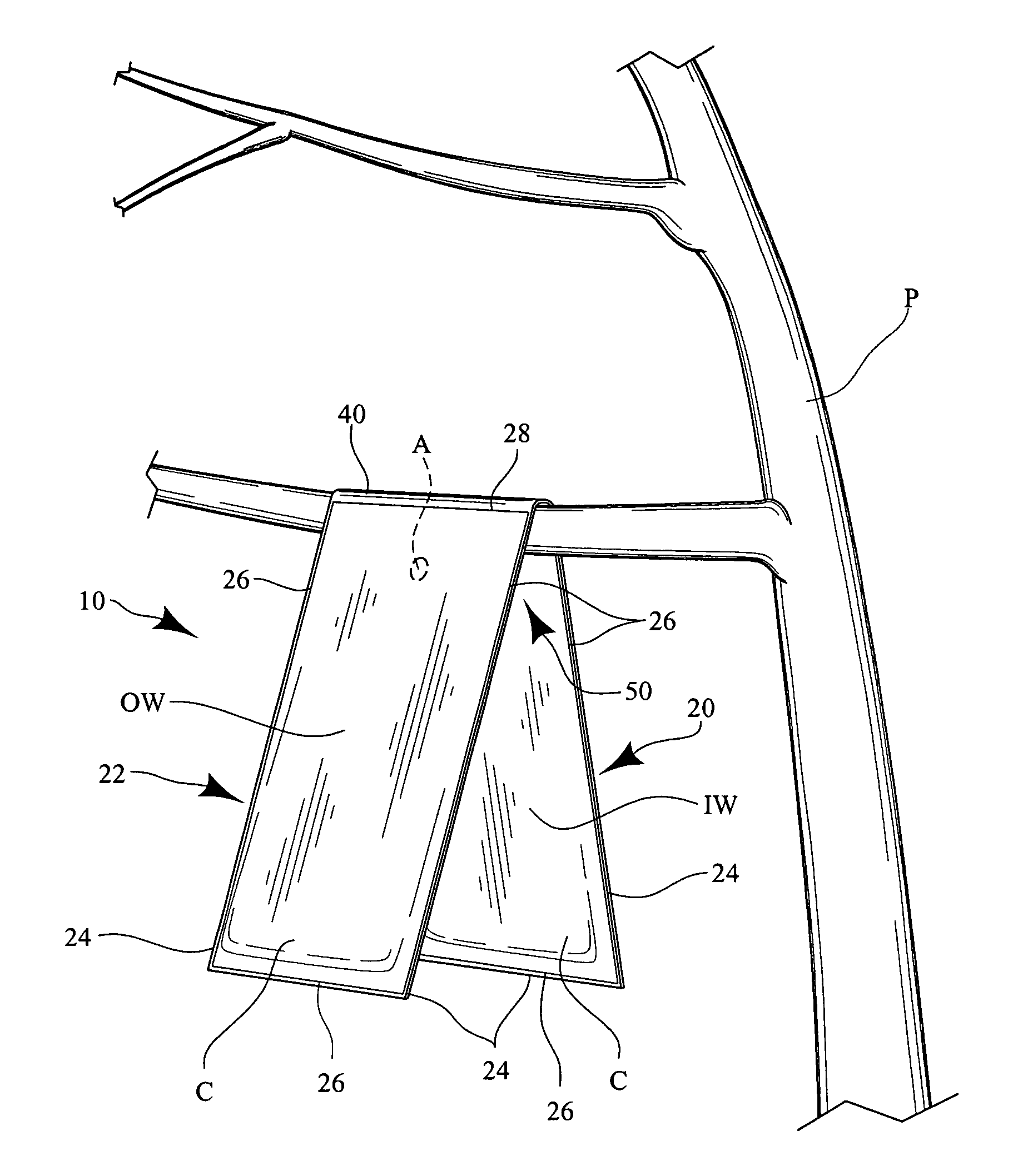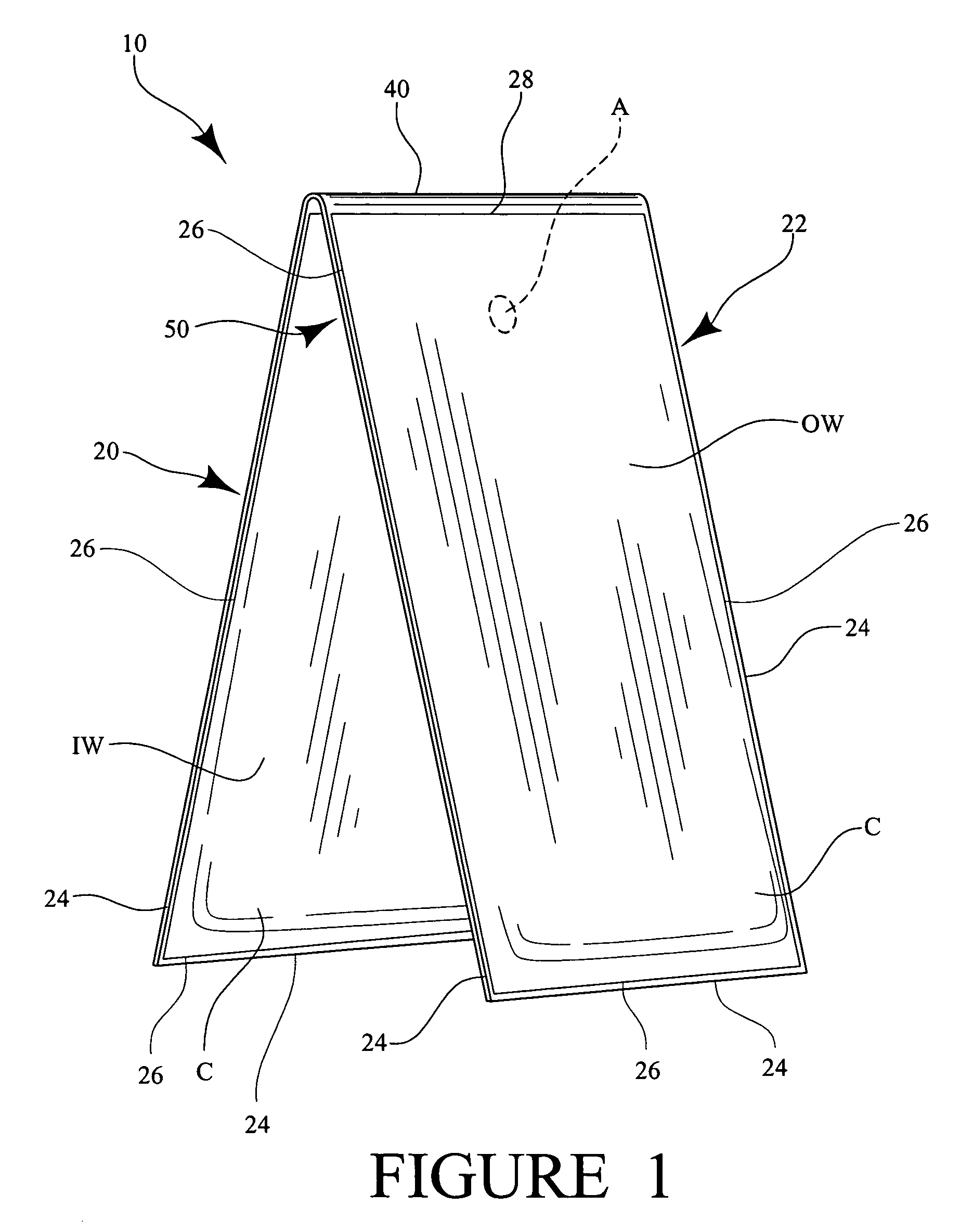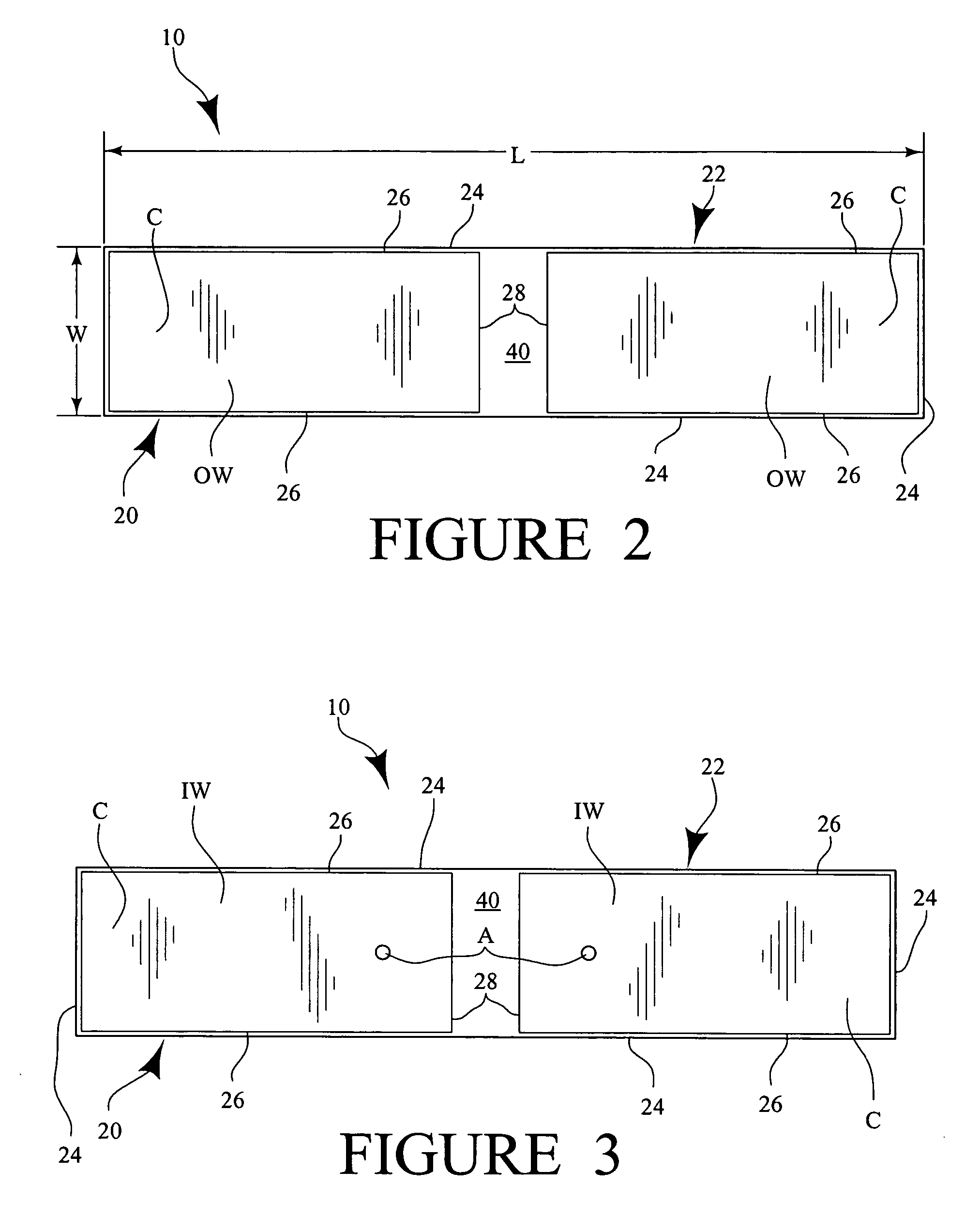System for providing beneficial insects or mites
a technology of beneficial insects and mites, applied in the field of insect and mite control, can solve the problems of loss of important agricultural crops, significant economic loss to growers, and pests that are also burdens for vegetable and fruit growers, and can cause significant economic loss to home gardeners
- Summary
- Abstract
- Description
- Claims
- Application Information
AI Technical Summary
Benefits of technology
Problems solved by technology
Method used
Image
Examples
example 1
A. Aims
[0068] A trial was established to compare emergence of Amblyseius cucumeris and a prey mite (Tyrophagus putrescentiae) from the presently disclosed novel system compared to the standard controlled release system sachets produced by Syngenta Bioline, as well as the products of two competitors.
B. Trial Design
[0069] Several different products were tested in the trial. Table 1 below indicates these products.
TABLE 1ProductDescriptionANovel system 1: 40 g / m2 paper coated with 20 g / m2polyethyleneBNovel system 2: 40 g / m2 paper coated with 50 g / m2polyethyleneCAMBLYLINE CU CRS ™,Syngenta Bioline, Essex, EnglandDAMBLYSEIUS-BREEDING-SYSTEM (ABS) ™,Biobest N.V., Westerlo, BelgiumETHRIPEX-PLUS ™,Koppert BV, Rotterdam, Netherlands
[0070] All product types were suspended over plants in a greenhouse in identical conditions, with overhead watering from an automatic sprinkler system once each day to represent the watering systems used in many ornamental crops.
[0071] Existing sachet syste...
example 2
A. Aims
[0081] A trial was established to compare populations of Amblyseius cucumeris found on plants (chrysanthemum) to which the presently disclosed novel system and the standard controlled release system sachets produced by Syngenta Bioline had been attached.
B. Trial Design
[0082] Two different products were tested in the trial. Table 4 below indicates these products.
TABLE 4ProductDescriptionANovel system 1: 40 g / m2 paper coated with 20 g / m2polyethyleneBAMBLYLINE CU CRS ™,Syngenta Bioline, Essex, England
[0083] Both product types were suspended from wire framework used to support the stems of flowers in a greenhouse in identical conditions, with overhead watering from an automatic sprinkler system as needed, typically for 15 minute intervals 1-3 times per week.
[0084] Product B sachet systems were fitted with waterproof plastic hooks to ensure that they remained hanging where placed for the duration of the trial, therefore artificially prolonging the life of existing sachets ...
example 3
A. Aims
[0090] A trial was established to compare populations of Amblyseius cucumeris found on plants (chrysanthemum) to which the presently disclosed novel system and a THRIPEX-PLUS™ sachet (Koppert BV, Rotterdam, Netherlands) had been attached.
B. Trial Design
[0091] Two different products were tested in the trial. Table 7 below indicates these products.
TABLE 7ProductDescriptionANovel system 1: 40 g / m2 paper coated with 20 g / m2polyethyleneBTHRIPEX-PLUS ™Koppert BV, Rotterdam, Netherlands
[0092] Both product types were suspended from wire framework used to support the stems of flowers in a greenhouse in identical conditions, with overhead watering from an automatic sprinkler system as needed, typically for 15 minute intervals 1-3 times per week.
[0093] Product B sachet systems were used as commercially available without further modification.
C. Assessments
[0094] In order to measure mite numbers on plants, each week, for each treatment, three (3) batches of five (5) whole plant...
PUM
 Login to View More
Login to View More Abstract
Description
Claims
Application Information
 Login to View More
Login to View More - R&D
- Intellectual Property
- Life Sciences
- Materials
- Tech Scout
- Unparalleled Data Quality
- Higher Quality Content
- 60% Fewer Hallucinations
Browse by: Latest US Patents, China's latest patents, Technical Efficacy Thesaurus, Application Domain, Technology Topic, Popular Technical Reports.
© 2025 PatSnap. All rights reserved.Legal|Privacy policy|Modern Slavery Act Transparency Statement|Sitemap|About US| Contact US: help@patsnap.com



